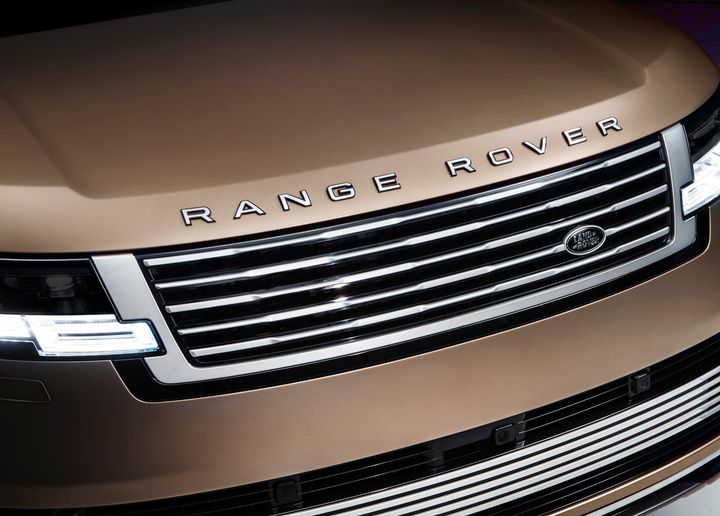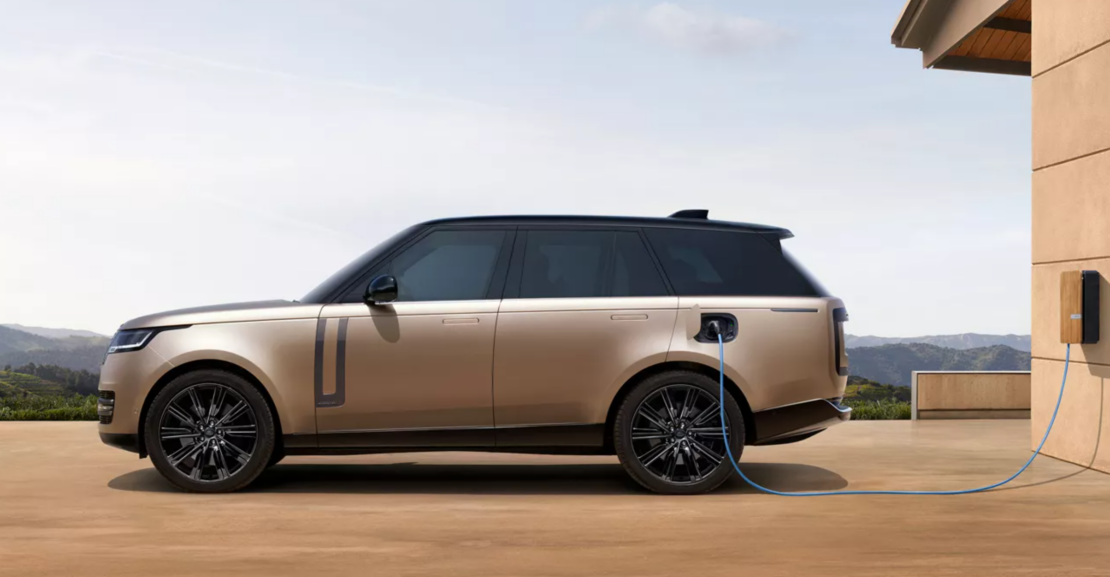According to JLR, The Range Rover EV will be likely similar to the exist line-up models. We must take a note that EV must be capable of rock crawling and managing submersion of 90 cm. JLR plans to release it on the market by 2025.
The drag coefficient (0.30 Cd) is around 10% lower than in the previous model (0.34 Cd). With this significantly lower drag coefficient figure, the all-new Range Rover is the world’s most aerodynamically efficient luxury SUV, JLR claims. Any further refinement in this area can only help improve the range and quietness of the EV model.
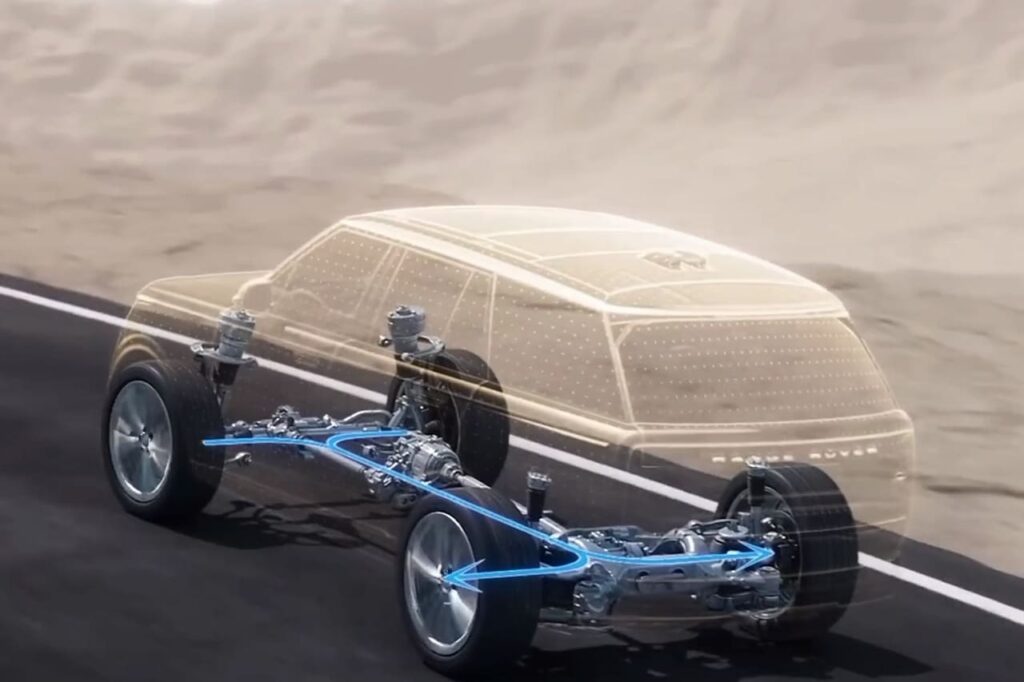
JLR has released a set of teasers that reveal most of the design changes on the Range Rover Electric. The upper grille of the EV has a similar design, but it is almost fully covered and features slim rectangular openings. On the sides, the trademark signature side graphic has an elegant, rose gold-like shade.
JLR may offer other design as options. However, the multi-spoke alloy wheels carry a special aerodynamic design without upsetting the planted and purposeful stance. They feature a two-tone silver-black finish and an “EV” center cap instead of the familiar Land Rover oval center cap. The electric SUV features a unique power-sliding cover to open or secure the charging port.
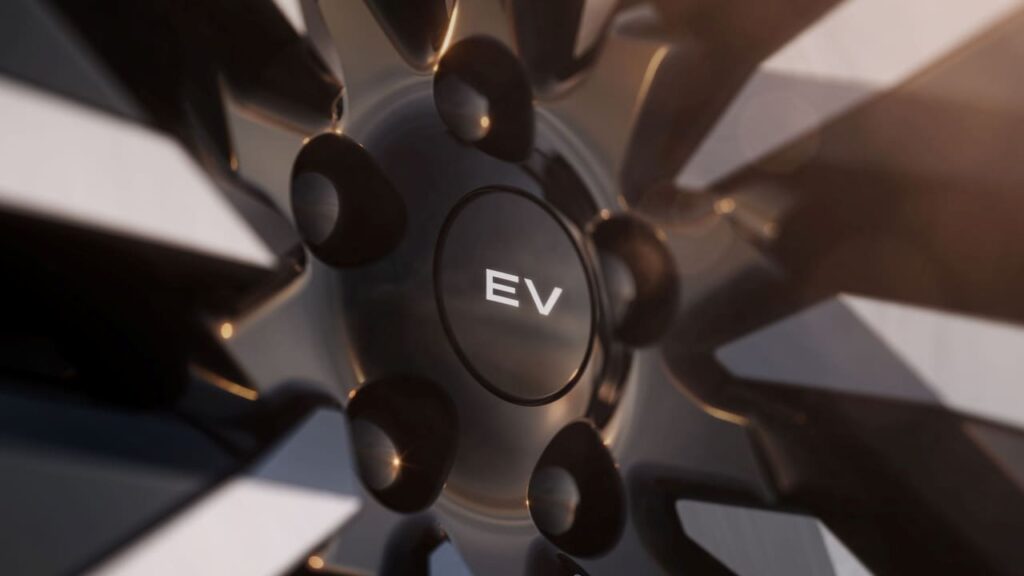
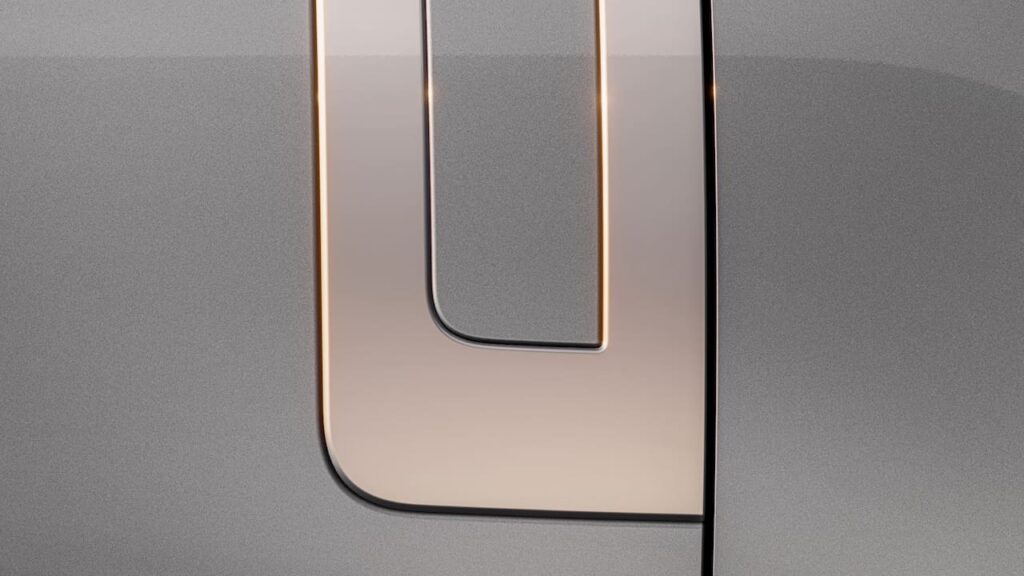
LWB version has a big future
According to KCD, the three-row SUV isn’t doing well with Range Rover, however, based on American market, 3rd row seat is the most usable variant when the seats can be folded to expand the boot. So we’re expecting similar to three seats from Electric SV.
A Range Rover Electric SV also continues to deliver because it is and emotionally attractive for the Special Vehicle, the all-electric Range Rover SV should offer exclusive design details, colors, and materials. A high degree of personalization would let customers configure a more luxurious and unique SUV.
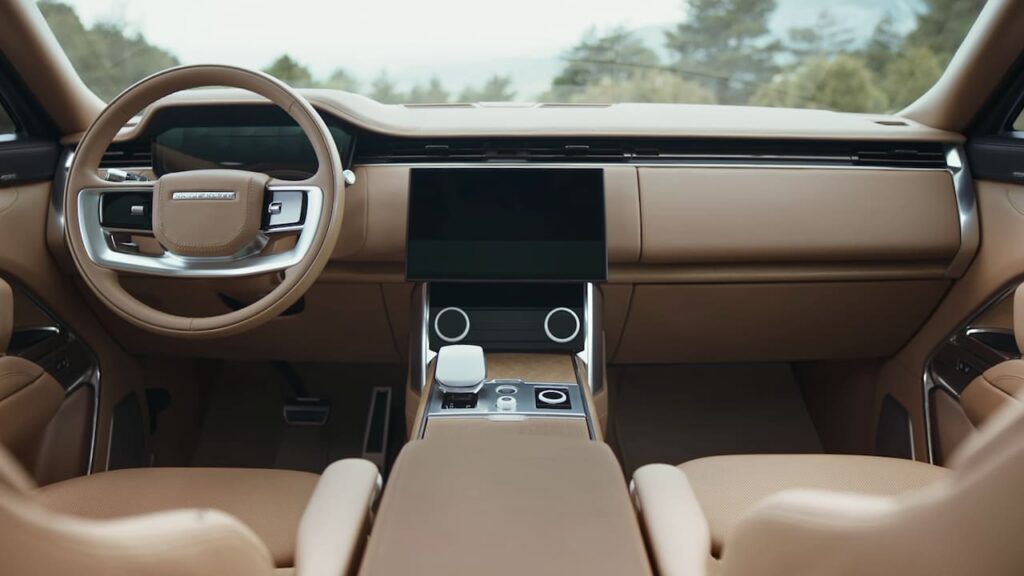
The pure-electric Range Rover will feature the largest screens Land Rover offers. A leather-free interior will be available optionally to make it even more appealing for eco-conscious customers who stand against animal cruelty and seek a vegan alternative. Wireless Apple CarPlay, wireless Android Auto, and a wireless smartphone charger will be standard, helping customers avoid extra wires and further save the environment.
Interior
Likewise, a 13.7-inch semi-floating, fully digital instrument cluster works in sync with the Pivi Pro system from combustion model. The new climate control panel is more conventional. The electronic gear selector is a new short and compact unit, in line with the new reduced design theme. Rear-seat passengers can entertain themselves with adjustable 11.4-inch HD touchscreens. We don’t see why Land Rover will change these features in the EV model.
An 8-inch touchscreen residing in the rear center armrest allows controlling the seating position and making other adjustments to fine-tune the rear cabin environment. For the first time, customers can specify their Range Rover as a seven-seater, and so big families no longer need to settle for the Range Rover Sport.
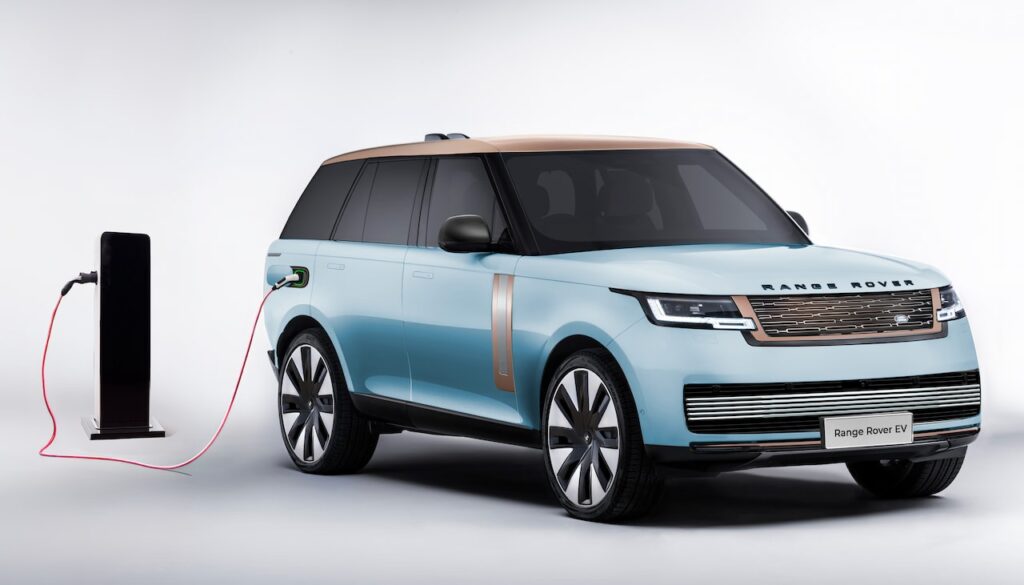
Specification
The all-new Range Rover opens a new chapter for the brand, debuting a game-changing platform, MLA-Flex, that will prepare it to go all-electric. MLA-Flex will enable Land Rover to package even the heaviest SUVs with everything from conventional engines to hybrid systems and fully electric powertrains. Land Rover plans to utilize MLA-Flex for many models in a top-down approach, and the big daddy Range Rover is the first of the lot. MLA-Flex means its body will be 50% stiffer with a full-length panoramic roof. And it is the first Range Rover has 23-inch wheels, and they would look great on its electric variant.
The 75 mm extra wheelbase of the MLA-Flex platform provides a roomier interior. With the additional 200 mm wheelbase of the Long Wheelbase version, for the first time ever in the Range Rover, seven occupants can comfortably travel together.
Range Rovers are renowned for their refinement, comfort, and capability. All those aspects stand to gain by making it electric. The zero-emission variant would be smoother and quieter, so whether you’re behind the wheel or in the back seat, you could find it a more relaxing vehicle. Plus, more power and torque should make it quicker and zippier, if you choose to drive.
What is cell-To-Pack technology?
In Cell to Pack (CTP), the individual cells are integrated directly into the battery pack, skipping the module grouping step. It offers several advantages: it increases both volumetric and gravimetric energy density, allowing for more energy storage in the same space or a lighter battery, thus enhancing the driving range.
CTP also decreases manufacturing complexity and costs by simplifying the process and reducing components. Additionally, it improves thermal management as the cells are closer to the cooling plate, which improves battery performance and life.
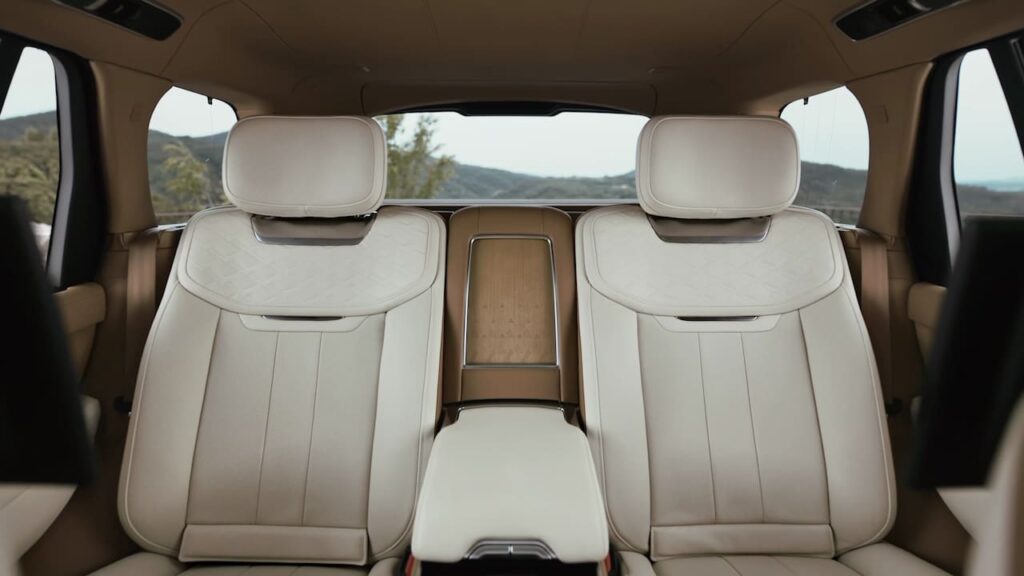
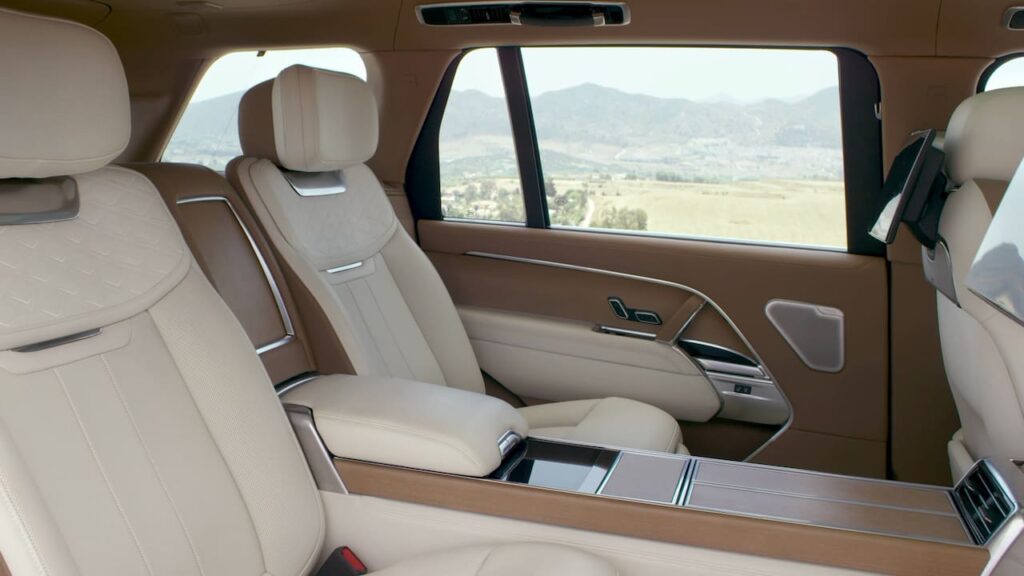
What do we need to know about EDU
Electric Drive Unit, EDU will be assembled in house. Additionally, JLR disclosed that the new EV ditches a traditional ABS-based traction control system in favor of advanced software designed to precisely manage wheel slip. This innovation reportedly decreases the “torque reaction time at each wheel from 100 milliseconds to just one millisecond.” Consequently, “traction is maximized on all surfaces with exceptional response and composed refinement, significantly enhancing the Range Rover drive experience.”
Charging
JLR has confirmed that best-in-class charging performance, the battery pack 800 volts or 350 kW, claimed 10-80% takes about 25 mins and fully chraged is up to 480 km. High-end home charging will be available, specially, in UK and USA.
JLR is set to begin deliveries of the Range Rover Electric in early 2025, having initially aimed to start accepting orders in late 2023. Due to delays, the company instead opened a waiting list, as announced during the Tata Motors Group Q4 FY24 earnings call on May 10, 2024. As of August 1, 2024, more than 41,000 prospective clients have signed up to get in line for the upcoming electric SUV. Therefore, Cambodia market might need wait due to sale volume.
Where it will be manufacturing
JLR’s Solihull, UK, plants has been around since 1970 and it will be the production of the Range Rover Electric will take place. The batteries will come from an external supplier for a few years, as per the online report. JLR will kick off production of its first EV by the end of 2024.
JLR is setting up a new production system at the Solihull factory to support the production of the Range Rover Electric with an investment of approximately USD 90 million. This is in addition to USD 166 million investment in adding a new body shop to increase the production of the Range Rover and Range Rover Sport model lines by 30%.
Price
Prices of the Range Rover Electric could start at around USD 330,000 in the Cambodia market, however, we hope to get some EV incentive once it is ready to debut here.
Imaged by JLR
